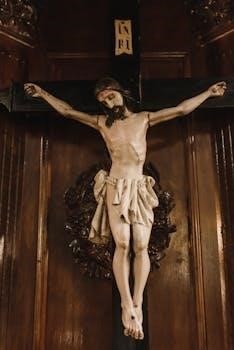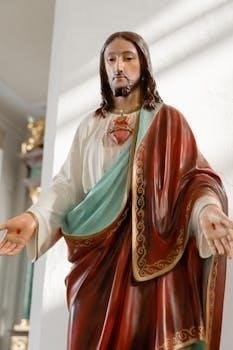rita hayworth and shawshank redemption pdf
Rita Hayworth Poster in Shawshank Redemption
The iconic Rita Hayworth poster is the first one Andy Dufresne acquires in The Shawshank Redemption. He requests it from Red after watching Gilda, starring Rita Hayworth. The prison frequently screens the movie, which Andy has seen multiple times.
First Poster for Andy Dufresne
Andy Dufresne’s initial poster choice is a striking image of Rita Hayworth, specifically from her 1946 film, Gilda. This poster marks the beginning of Andy’s gradual transformation of his stark prison cell into a personal space. The poster is more than just a decoration; it’s a symbol of hope and a connection to the outside world. It represents a piece of Hollywood glamour within the dreary confines of Shawshank. It’s a carefully selected image which mirrors the movie being shown in the prison. The poster, sourced by Red, becomes a crucial element in Andy’s long-term plan of escape. This piece of vibrant artwork introduces a sense of fantasy and freedom into his otherwise confined world. It also serves as a starting point for his collection of famous actresses posters on his prison cell wall.
The Movie Gilda and Rita Hayworth
The 1946 film Gilda is pivotal to the narrative of The Shawshank Redemption, as it features Rita Hayworth, whose image becomes the first poster in Andy’s cell. Gilda showcases Hayworth‘s captivating beauty and star power, which is why the inmates watched it. It was her performance that inspired Andy to select a poster of her. The film itself is a classic example of film noir, with Hayworth playing a complex and alluring character. In the context of Shawshank, the movie serves as a link to a world of freedom and glamour that is starkly contrasted with the reality of prison life. The film screenings in the prison also provide a form of entertainment for inmates and a brief escape from their daily monotony. The movie and Hayworth’s performance are a symbol of hope.
Frequency of Movie Screenings in Shawshank
Movie screenings, including Gilda starring Rita Hayworth, are a regular occurrence within the confines of Shawshank State Prison. These screenings provide a temporary diversion and a brief escape from the harsh realities of prison life for the inmates. The frequency of the movie screenings, particularly Gilda, is significant. Andy Dufresne himself mentions having seen the film multiple times, specifically three times within a single month. The repeated showing of Gilda and the recurring image of Rita Hayworth are not just background details; they are a key part of the setting and contribute to the development of the plot. The screenings create a shared experience among the prisoners and also highlight the passage of time within the prison walls. These cinematic moments offer a brief glimpse of the world outside, further emphasizing their longing for freedom.

Poster Significance and Symbolism
The posters, especially Rita Hayworth’s, symbolize Andy’s longing for freedom and his cleverness. They represent hope and a way to conceal his escape plan, acting as a deceptive facade.
Symbol of Freedom and Escape
The Rita Hayworth poster, and the subsequent ones, are potent symbols of Andy Dufresne’s yearning for freedom within the oppressive walls of Shawshank. These glamorous images of Hollywood stars, far removed from the grim reality of prison, represent a world beyond confinement and a life of possibility. The posters serve as a visual manifestation of Andy’s inner desire to escape both physically and mentally from his circumstances. They are not just decorations; they are a constant reminder of what lies beyond prison bars, fueling his hope and determination. Furthermore, the posters provide a temporary escape from the harshness of prison life, allowing Andy, and perhaps other inmates, a moment to dream of a world outside of Shawshank. They become, therefore, an important element of Andy’s psychological survival.
Hiding the Tunnel
Beyond their symbolic representation of freedom, the Rita Hayworth poster, along with the subsequent posters of Marilyn Monroe and Raquel Welch, serve a crucial practical purpose⁚ concealing the tunnel Andy Dufresne meticulously excavates over decades. These large posters are strategically placed on the cell wall, effectively masking the hole and preventing discovery by guards during inspections. The posters act as a clever disguise, allowing Andy to carry on with his escape plan undetected. The seemingly innocuous images of Hollywood glamour hide the very instrument of his liberation, transforming them from mere decoration into vital components of his scheme. This dual function highlights Andy’s intelligence and resourcefulness in utilizing the tools at his disposal to achieve his long-term goal. The posters also create a sense of normalcy in his cell, further preventing suspicion.

Poster Availability and Formats
The Rita Hayworth posters, inspired by The Shawshank Redemption, are widely available. They can be found through various online marketplaces and retailers, in different sizes and framing options, catering to various preferences.
Various Retailers and Online Marketplaces
Numerous online marketplaces and retailers offer Rita Hayworth posters inspired by The Shawshank Redemption. These platforms include major e-commerce sites like eBay and Amazon, where a variety of options are available, from unframed prints to lobby cards. Sites specializing in handmade and vintage items, such as Etsy, also feature unique and custom pieces. Additionally, some dedicated art and poster retailers offer high-quality prints on various paper stocks, including premium fine art paper. These diverse sources provide customers with a wide range of choices, catering to different preferences in terms of design, size, and print quality. Whether one seeks a classic movie poster reproduction or a unique, handmade piece, numerous retailers cater to collectors and fans alike, making it easy to find a perfect Rita Hayworth poster.
Sizes and Framing Options
The Rita Hayworth posters inspired by The Shawshank Redemption are available in a variety of sizes to accommodate different needs and spaces. Common sizes include 11×14 inches, often presented as unframed lobby cards, as well as larger formats like 11×17 inches and 24×36 inches. A2 size posters, approximately 16.5 x 23.4 inches, are also available. Many retailers offer posters with a 1-inch white border to facilitate framing and matting. Customers can choose from frameless options or select from various framing possibilities to match their home decor. This flexibility allows for both simple and more elaborate displays. The diverse sizing ensures that fans can find a suitable poster, whether for a personal collection or as a unique gift, in the size and format that best suits their requirements.

The Novella and Movie Adaptation
Stephen King’s novella, Rita Hayworth and Shawshank Redemption, was published in 1982. It was later adapted into the critically acclaimed film, The Shawshank Redemption, directed by Frank Darabont, staying true to the original story.
Stephen King’s Original Novella
Stephen King’s novella, originally titled Rita Hayworth and Shawshank Redemption, was first published in 1982 as part of his collection, Different Seasons. This compelling story delves into the life of Andy Dufresne, a banker wrongly convicted of murdering his wife. The narrative follows his experiences within the harsh confines of Shawshank State Penitentiary, detailing his resilience, friendships, and the enduring hope that helps him survive. King masterfully uses vivid imagery and character depth to explore themes of injustice, incarceration, and the human spirit’s capacity for endurance. The novella’s realist style and focus on the everyday lives of the prisoners make it a standout piece in King’s extensive body of work, setting the stage for its successful adaptation into film.
Film Adaptation by Frank Darabont
Frank Darabont’s masterful adaptation of Stephen King’s novella, titled The Shawshank Redemption, brought the story to the big screen with remarkable fidelity and emotional depth. Released in 1994, the film retained the core narrative of Andy Dufresne’s wrongful imprisonment and his enduring quest for freedom. Darabont’s direction skillfully captured the oppressive atmosphere of Shawshank, enhancing the themes of hope, friendship, and resilience. The film’s success is also attributed to its iconic performances, particularly Tim Robbins as Andy and Morgan Freeman as Red. Darabont successfully translated the novella’s nuances into a visually stunning and emotionally resonant cinematic experience, earning critical acclaim and securing its place as a beloved classic in film history, further popularizing the novella.

Rita Hayworth’s Career
Rita Hayworth began her acting career in the 1930s, gaining prominence in films like Only Angels Have Wings and You Were Never Lovelier. She became one of Hollywood’s most popular stars.
Rise to Hollywood Stardom
Rita Hayworth‘s journey to Hollywood stardom began with her early roles in the 1930s. She quickly transitioned from minor appearances to more significant parts, showcasing her talent and captivating screen presence. Her performances in films like Only Angels Have Wings and You Were Never Lovelier solidified her position as a rising star. Her natural beauty, combined with her dancing ability and acting prowess, made her a unique and sought-after talent in Hollywood. These early successes paved the way for her to secure her place among the most popular and admired performers of her time. Hayworth‘s ability to portray a range of characters, from charming and sophisticated to vulnerable and dramatic, ensured her enduring popularity and cemented her legacy as a true Hollywood icon.
